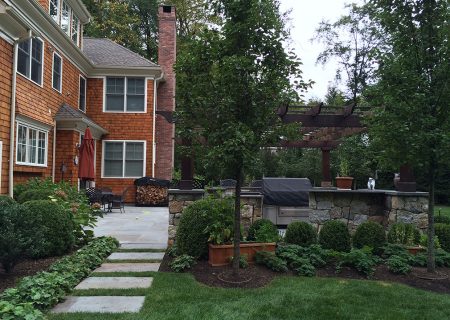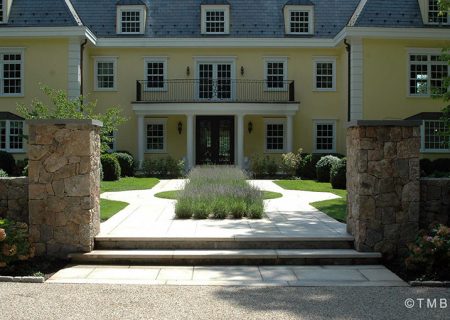
Whether you will borrow your landscape design or you plan to come up with your own design, there are some basic principles to which you should adhere. This does not mean that all the mentioned principles below will apply to your landscape design. However, having a basic grasp of these ideas will assist you to come up with better plans.
1. Have the User Experience in Mind
When working on any landscape, it is important that you think about its final use. Everything else you do should be based on this basic idea. Think about what the space will be used for. The plan you create should think about using all the available space. That means
Besides that, consider the current site conditions such as the utilities, the drainage, slopes, existing structures and much more. Additionally, you will have to think about the climate and other external forces. The climate, for instance, may limit the kind of plants you use. For example, if the area experiences hot summers, the boxwood will need shade and regular watering.
2. Use Consistency and Repetition to Create Unity
By using repetitive elements like boxwood plants trimmed in similar shapes, you are able to create unity. That way, all the elements in the landscape will fit together to create a whole. Unity can be achieved by using similar shapes, colors, texture, height, and much more.
If you are aiming to create some unity, you will need to have themes. A simple way to create themes is to use a bit of garden décor. Ensure that the theme is based on something which you like or that you are passionate about. For you to have unity, you will need to have at least one repetitive element in the entire landscape.
3. Lines are Important
Lines determine how visitors think about the area you are designing. The lines further assist you to achieve unity via interconnection. Horizontal lines lead to a feeling of ease while vertical lines suggest expansion. It is up to decipher the client’s style during the plotting process. If the property will be used as a spa, it is best to use curvy or horizontal lines. These types of lines encourage people to explore the property.
If the design is to be used in an area where order is needed, straight lines are preferred. They are mainly used in busy urban areas where the movement of people needs to be fast. The use of straight lines is also quite common in an office setting. They are used to signify efficiency.
4. Keep Balance In Mind
Balance is a sense of equality. You can have either symmetrical balance or asymmetrical balance. Symmetrical balance applies when there are elements in the design that are spaced equally in regards to form, shape, height, theme, and much more.
Asymmetrical balance is achieved when textures, forms, colors, and others remain constant. However, Hardscapes and shapes are more random. This leads to the creation of different themes with each having a different but equal attraction. In short, it is about being abstract while still achieving unity through repetition of some elements. When flowing lines are combined with straight lines during plotting to create contrast, it is an example of asymmetrical balance.
5. Scale Can Be Used to Make People Feel Small or Large
In landscaping, scale is how the surrounding measures to the person in terms of size. Scale can have a huge impact on the feeling about an area if executed with precision. For instance, it can be used in playgrounds to make the kids feel bigger than their surroundings.
6. Take Texture and Color into Consideration
Color and texture have been shown to have subtle effects on the psychology and emotions of those that use the area being designed. Plants have a wide range of texture. The size of the leaves, the length of the limbs and the density of foliage usually influence the texture. Broad leaves grab more attention than tiny leaves, which when trimmed seem smooth from a distance. The surrounding surfaces can be used to contrast or complement the greenery.
The color is also an important consideration in landscaping. It can be used to attract attention. Colors can also be used to influence mood. The use of bright colors can help to make a place feel energetic while neutral colors will have a calming effect. When designing the physical structures in an area, natural colors such as blacks, gray, browns, and green are usually complementary to the natural elements in the environment. On the other hand, synthetic colors such as pink, reds, and purples contrast. They may even cause color clashing.
7. Natural Transition Matters
When you use natural transition, you are able to avoid the abrupt changes in the design. It basically refers to gradual change. The simplest way to use it is in plant heights and color. However, it can be applied to other elements of landscaping such as the texture, foliage size, and the shapes. A nice example is transitioning from large trees to mid-sized trees to small bushes and finally to bedding plants.
Transitioning has many uses in landscaping. It is normally used to create illusions of distance. That way, if the landscaper is working on a small property, they can make it seem large just like artists do in paintings. It can also be used to make objects seem closer than they really are.
8. Proportionality Matters
It may seem obvious, but it is still worth mentioning. It simply refers to having all elements sized appropriately in relation to each other. All elements have to be planned so that they do not create unintended asymmetry.
For instance, if you have a small courtyard that you are designing, a huge statue about 10 feet tall does not make sense. Another example of a lack of proportionality is a small fountain placed at the front of a large yard at the front of a building.
Proportionality does not mean that you cannot have tiny elements in a large space. You can still use tiny objects, but you will have to create rooms for them. For instance, you can place a small fountain at the corner of a large space, thus making it the focal point of the area.
For more information about landscaping and some great ideas you can use, visit my site. I am a professional landscaper who also incorporates art into the designs I create.




I never knew that we also have to take the psychological effect of landscaping into consideration. I never really paid much attention to color and texture until I read it from your article. My husband got a promotion last year, and that is how we’re able to move to a bigger home. I never had to worry about landscaping before. Now that I know how there are a lot of other considerations than I originally imagined, I’d be sure to consult with professionals on how to best execute what I have in mind. My husband worked very hard to afford our family this home. The least that I can do is help ensure we have great landscaping.
I wish you luck with your new home and landscaping Patricia.
…the psychological effects are inborn and cross every culture…the landscape, natural and man made, speak to us through a language that is analogous to the structures in the spoken language and in music. Music, however, is instantaneous…but the landscape endures as an ever-changing pallet with the seasons and with time. My job as a designer is to establish a language as I design by using architecture, the land and my client’s objectives as foils for the process and finished work.
Perhaps you will have an opportunity to pick up Leonard Bernstein’s The Unanswered Question…his Norton Lectures at Harvard University. This work was instrumental in defining how I was to perceive all of my future work. If you wish to amplify this experience, pick up Noam Chomsky’s book, Language and Thought…here I learned about to importance of narrative in the landscape.
Enjoy!
Michael